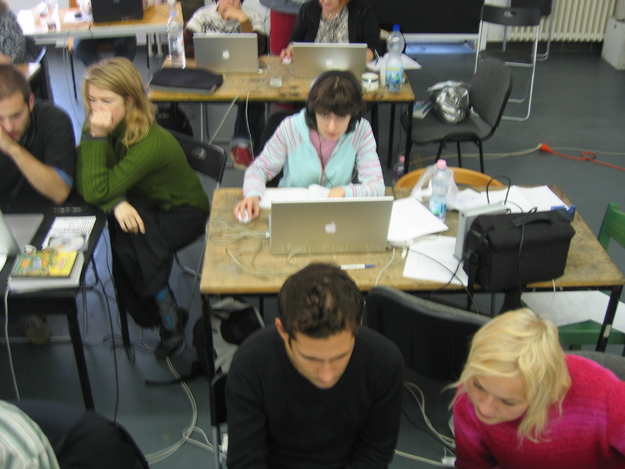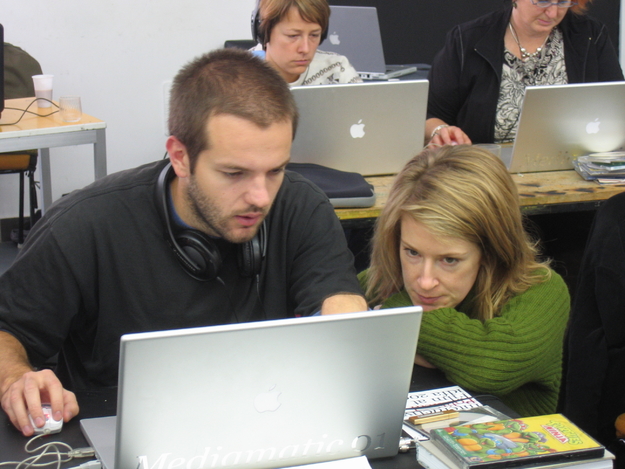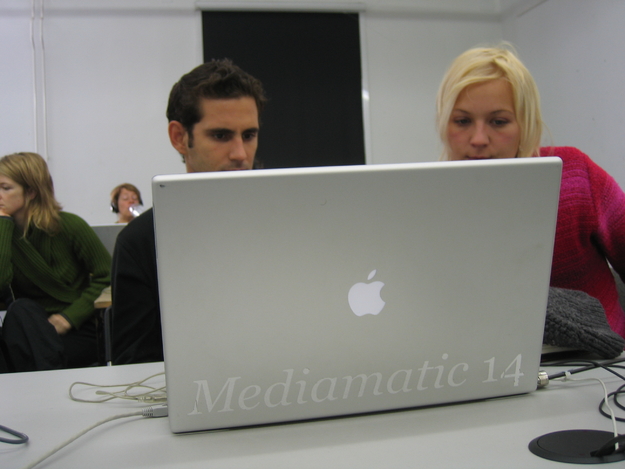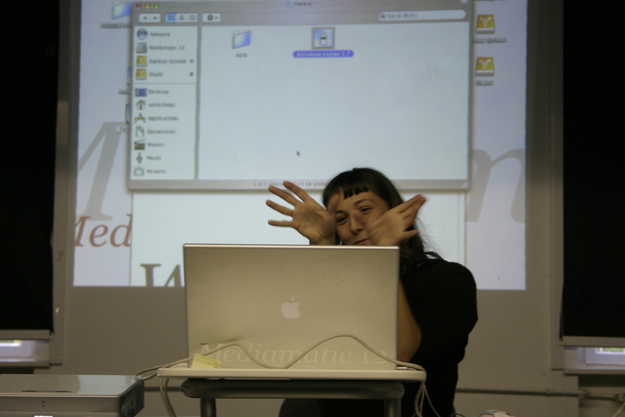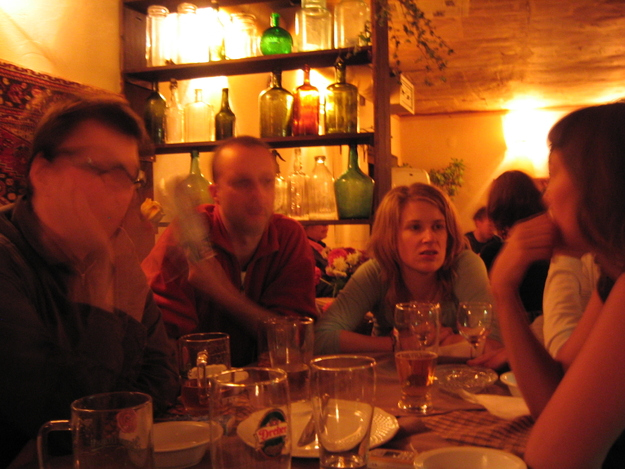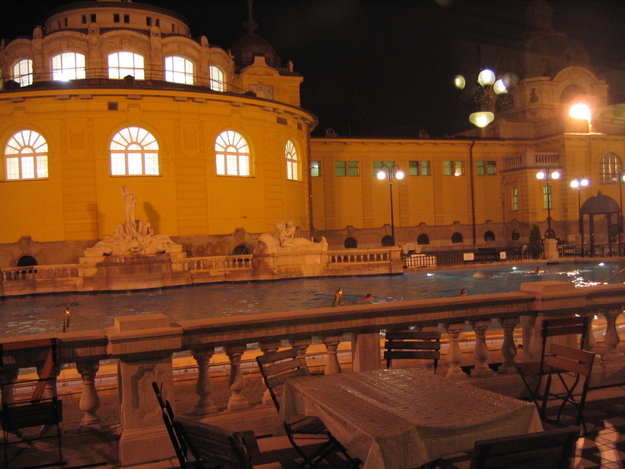Some people see a problem in the combination of storytelling (or film making for that matter) with interactivity. They hold the point in one way or another that what defines the main experiential quality of 'story', is that it is delivered by 'an author' and that the recipient of the story gives in to whatever this author cooked up. A story experience is essentially the suspension of disbelief towards a presented universe. Sceptics of interactive film often point out that this suspension of disbelief is a (too) complicated affair in a story that demands choices of the recipient. Making choices suggest some exercise of control, which doesn't blend well with giving in to a story experience.
Refreshing about the approaches of both Mark and Chris is that neither of them make a problem of the combination of narratives with interactivity at all.
In his projects and in his writing writing Mark developed several models that outline different practical strategies of making compelling interactive story experiences. Together they lay out where we are now, in the conceptual and technical development of the art form of interactive film. In Marks view, what interactive film is waiting for next, is the development of believable and responsive digital characters. This would mainly require the development of smart dialogue engines. If they would work, (and Mark is working hard to make them so) this would add a serious range of possibilites to interactive storytelling.
Chris Hales has made an impressive number of interactive films and did extensive research into historical forms of interactive cinema at the SmartLab of the Central Saint Martins Art Academy (UK). In his talk he presented a number of his works. In Chris view it isn't technology that makes interactive films believable or not, (he uses mainly Macromedia Director for his projects) it is the play with the expectations and possible readings by the viewer. In Chris' pieces, the narrative is made to exists in the eye of the beholder. Chris gives you the images, the links, the mood; you stitch them together as you click, and 'read' the effects of what you click. In a way, in Chris' works, the plot is a space, not a line. And their quality lies in timing and subtelty.
Then Florian Thalhofer showed the latest version of his multichannel project 13erStock and other Korsakow projects, leading the participants into the topics they need to research themselves to develop their workshop projects.
Again in this workshop a series of unexpected workshop projects were produced, some of which appeared to be impregnated with the melancholy of autumnal Budapest.
Every Interactive Film Lab so far led to at least one fundamental invention in using the software. The project of Adam Balint claimed this feat for the workshop in Budapest. He made a fictive piece on an actor doing audition for a critical jury.
The basic novelty was that the whole screenspace in his project looked like one unbroken surface, and the user could interact with the bottom half (the links, or the 'zone of choice' as the phrase was coined in a workshop at the Holland Animation Film Festival in 2004.) Adam made a seamless match between the structural aspects of the interface and the content it was presenting. Technically it can be said that the preview movies of a Korsakow project mediate between the user and the main screen; in Adams project, that characters of the preview movies did excactly that.
To name a few other inventive workshop results: Artist Arturo Infante made a futuristic fantasy collage about Cuba after the death of Castro, that can be browsed according to different social themes.
Ferenc Sebsj made a moving but also somewhat disturbing piece about two big guys play dancing with a small girl. Thematically the piece seems to circle around a nostalgia towards innocence, and the sad awareness of the danger that desiring innocence to much will destroy it, although innocence is not entirely fragile. The user can either play one or the other guy, but the little girl steals the show.
Cathy Greenalgh and Cathy Lane used the same very beautiful visual and audio footage that was shot on Iceland, with which they made two different pieces. One pieced focused on the contrast between the splendour of the image and the mundaneness of the sounds. The other piece tried to deconstruct the touristic reflexes of photographing and filming in a visually exciting place like Iceland, while still acknowledging its beauty and impressiveness.
The workshops success was celebrated with delicious Hungarian cuisine and a communal visit to the famous health baths at the Heroes Square, of which we sadly have only have discrete pictures. The chances are high that the Interactive Film Lab will return to Budapest.
